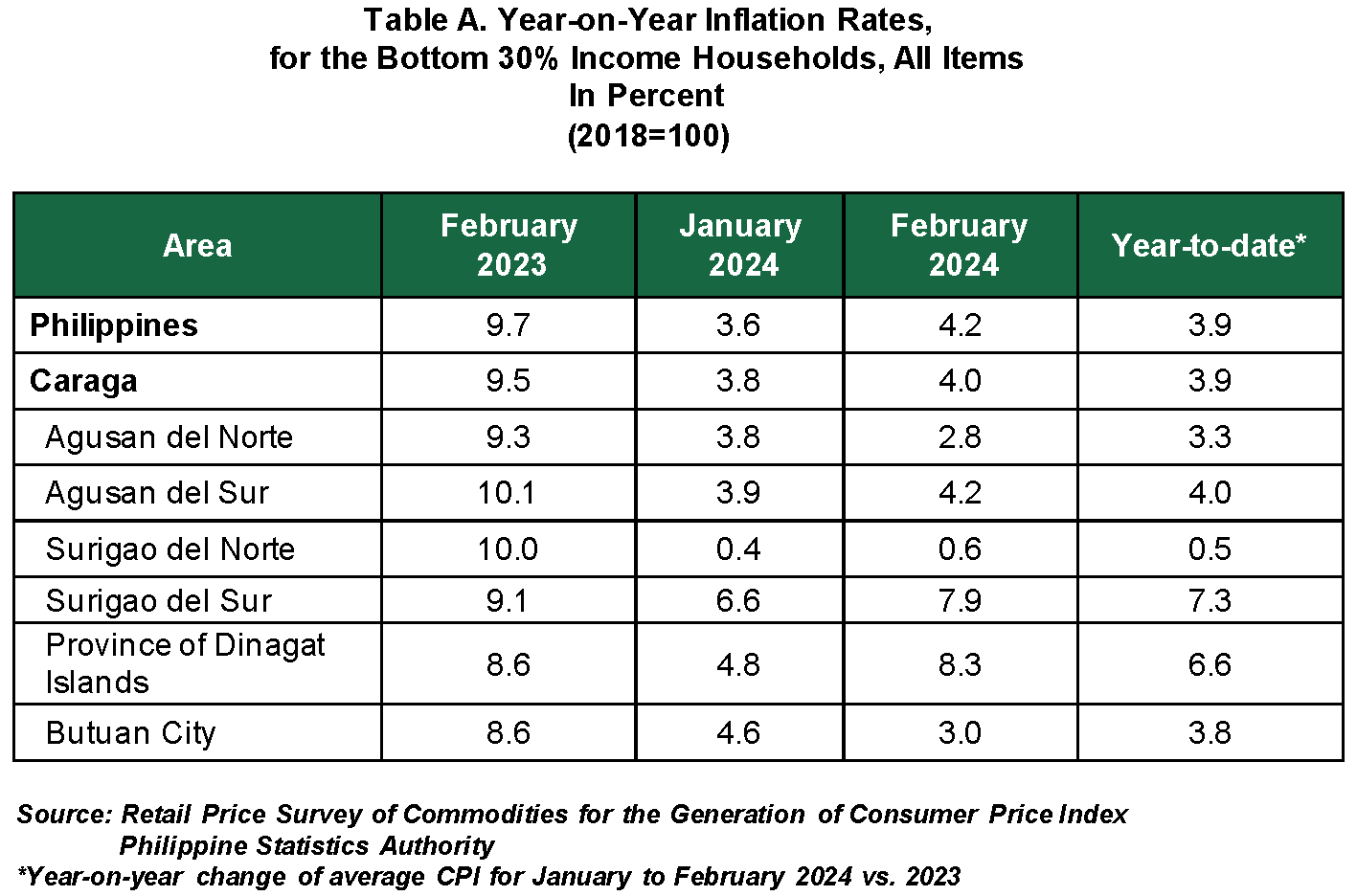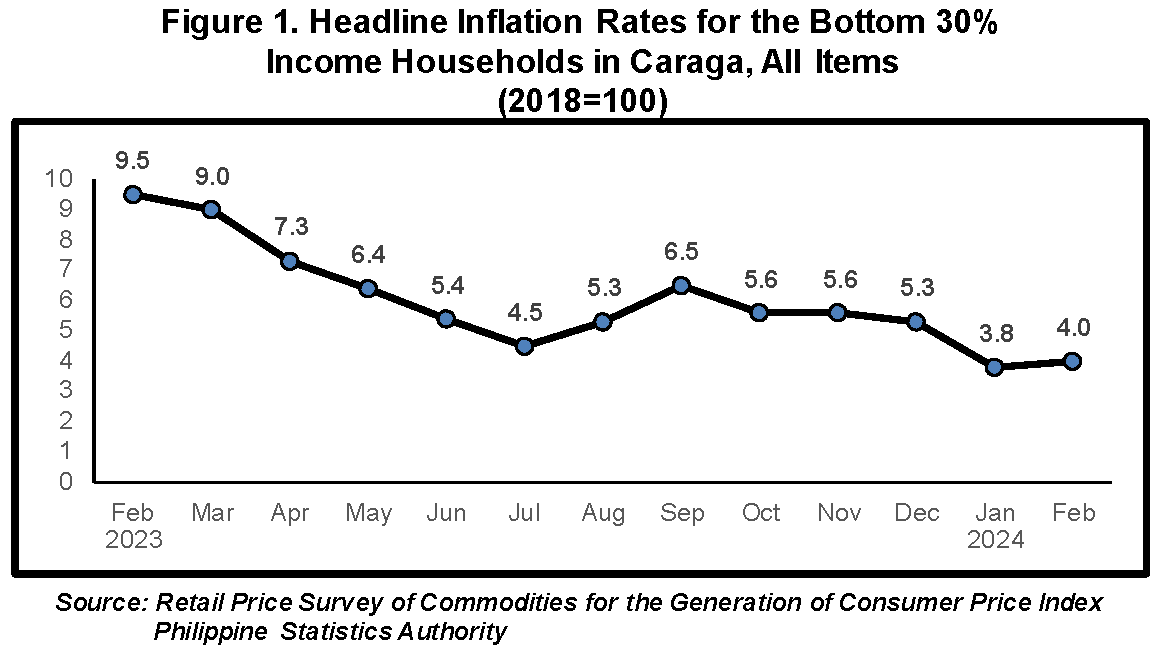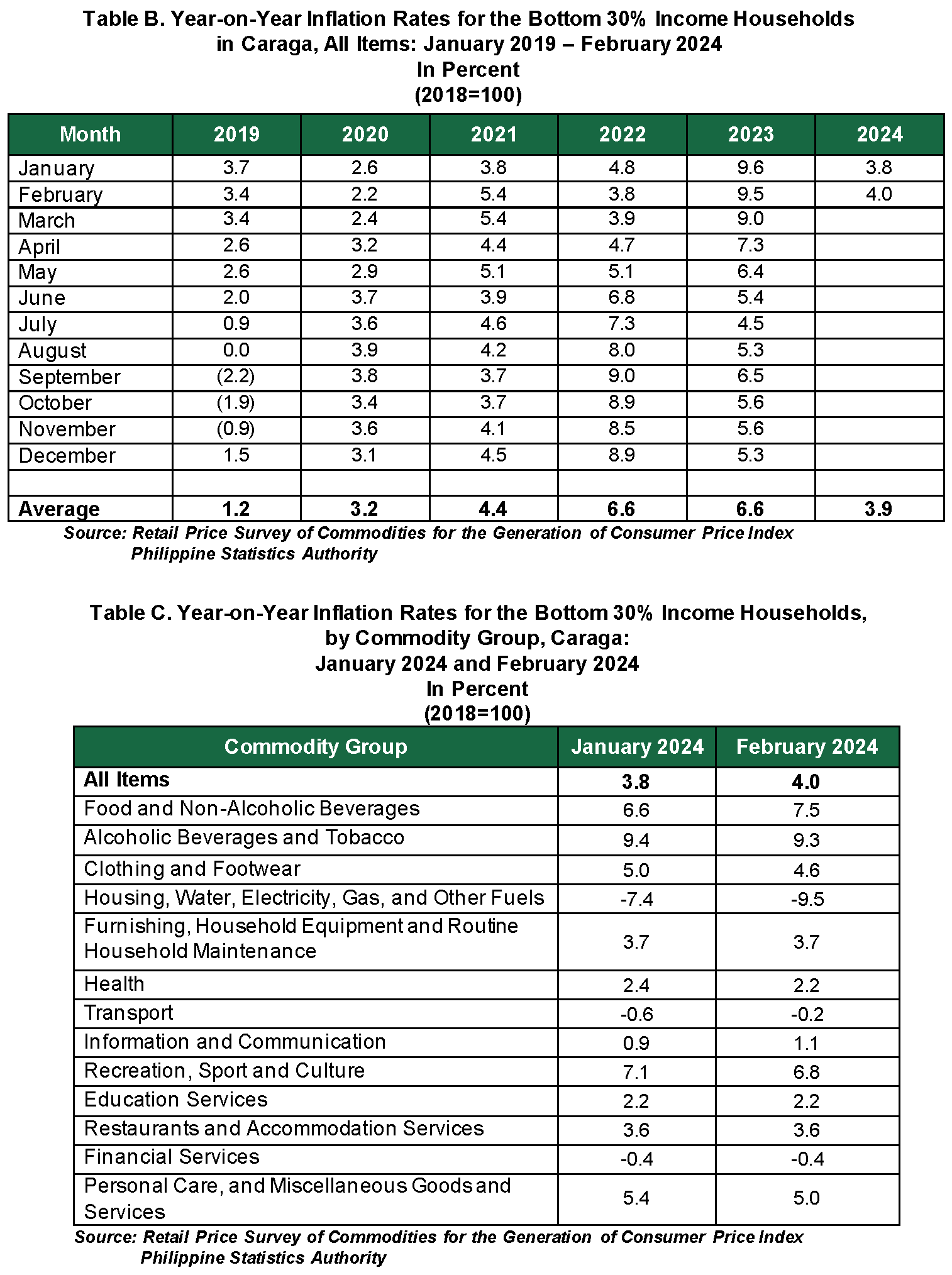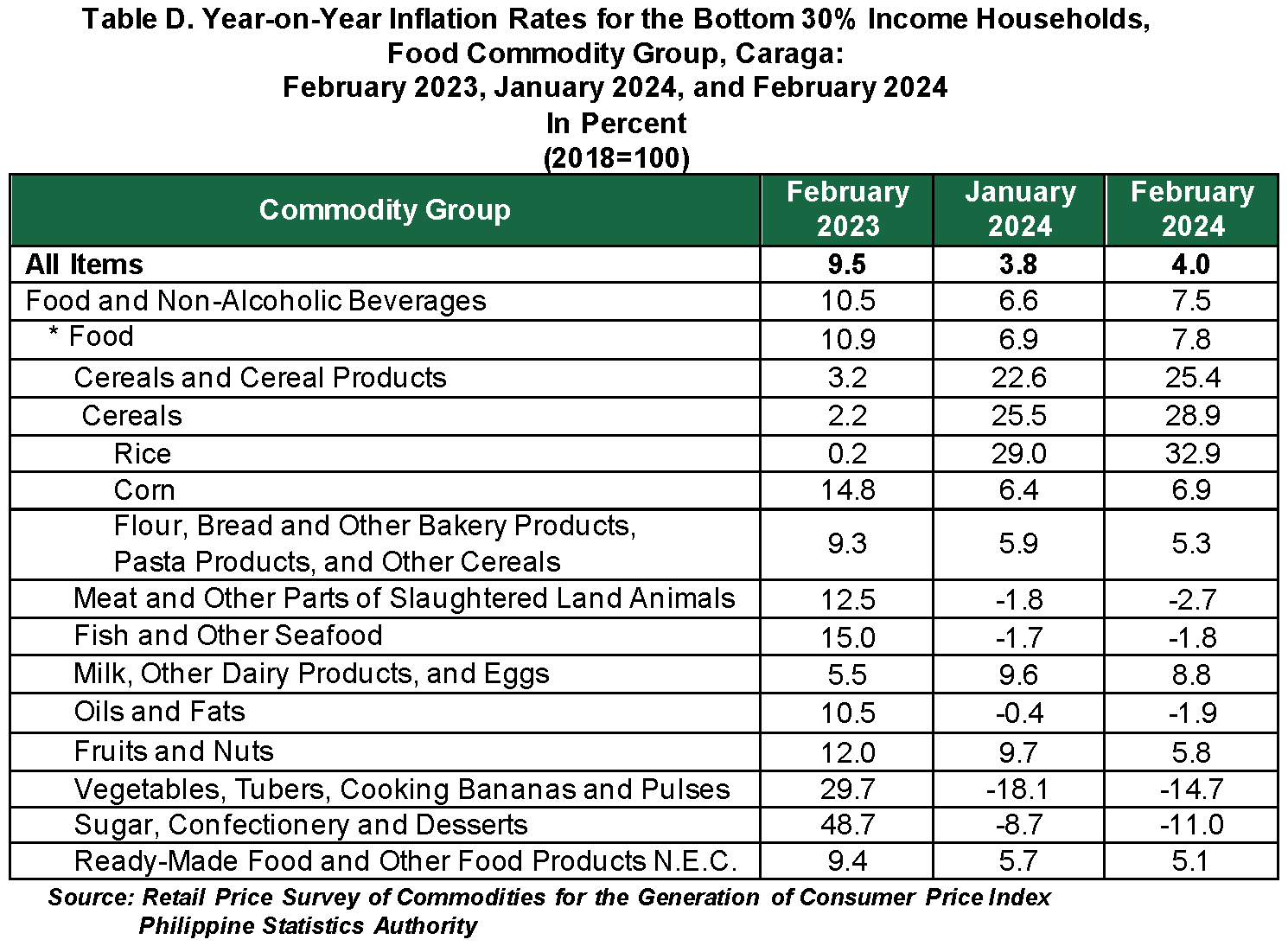Summary Inflation Report Consumer Price Index Bottom 30% Income Households (2018=100) February 2024


A. Caraga
1. Overall Inflation
The region’s inflation rate for the bottom 30% income household increased to 4.0 percent in February 2024 from 3.8 percent in January 2024. In February 2023, inflation rate was posted at 9.5 percent. (Figure 1, Table A, and B)
The main driver to the upward trend of the overall inflation for this income group in February 2024 was the higher year-on-year growth in the heavily weighted food and non-alcoholic beverages at 7.5 percent from 6.6 percent in the previous month. This was followed by transport, which posted at -0.2 percent inflation rate during the month from -0.6 percent in January 2024. Higher annual increments were also noted in the indices of information and communication, which was recorded at 1.1 percent during the month from 0.9 percent in January 2024.
In contrast, lower annual growth rates were noted in the indices of personal care, and miscellaneous goods and services at 5.0 percent in February from 5.4 percent in the previous month, and alcoholic beverages and tobacco at 9.3 percent during the month from 9.4 percent in January 2024. Also contributing to the downtrend in inflation during the period were observed in the following commodity groups during the month:
a. Clothing and footwear, 4.6 percent;
b. Housing, water, electricity, gas and other fuels, -9.5 percent;
c. Health, 2.2 percent; and
d. Recreation, sport, and culture, 6.8 percent
The indices of the rest of the commodity groups retained their respective previous month’s annual growth rates were observed in the following commodity groups:
a. Furnishings, household equipment, and routine household maintenance, 3.7 percent;
b. Education services, 2.2 percent;
c. Restaurants and accommodation services, 3.6 percent; and
d. Financial services, -0.4 percent

2. Food Inflation
Food inflation for the bottom 30% income households at the regional level accelerated to 7.8 percent in February 2024, from 6.9 percent in January 2024. In February 2023, food inflation was higher at 10.9 percent. (Table D)
The acceleration of the food inflation was primarily influenced by the higher year-on- year growth rate observed in cereals and cereal products (ND) which includes rice and corn at 25.4 percent from 22.6 percent in the previous month. This was followed by vegetables, tubers, plantains, cooking bananas, and pulses of -14.7 percent from
-18.1 percent in the previous month.
On the contrary, lower inflation rates were recorded during the month in the indices of the following food groups:
a. Meat and other parts of slaughtered land animals, -2.7 percent;
b. Fish and other seafood, -1.8 percent;
c. Milk, other dairy products, and eggs, 8.8 percent;
d. Oils and fats, -1.9 percent;
e. Fruits and nuts, 5.8 percent;
f. Sugar, confectionery and desserts, -11.0 percent; and
g. Ready-made food and other food products n.e.c., 5.1 percent

B. Provinces and Highly Urbanized City (HUC)
In February 2024, four provinces recorded higher inflation rates for the bottom 30% income households relative to their respective inflation rates in the previous month. The main contributor to the uptrend was registered in Surigao del Sur at 7.9 percent from 6.6 percent in the previous month. Then followed by Agusan del Sur at 4.2 percent compared to the 3.9 percent from the previous month. In addition, Dinagat Islands and Surigao del Norte also registered an increasing inflation rate at 8.3 percent and 0.6 percent, from 4.8 percent and 0.4 percent, respectively.
On the contrary, Agusan del Norte and its HUC (Butuan City) registered a decreasing inflation rate to 2.8 percent and 3.0 percent, from 3.8 percent and 4.6 percent respectively.
Note:
CPIs and inflation rates by province and selected city are posted on the PSA website (http://openstat.psa.gov.ph/).
ROSALINDA C. APURA, D.M.
Regional Director
PSA RSSO XIII (Caraga)
For The Regional Director:
SGD. PRESA P. VILLARINA
Supervising Statistical Specialist/ OIC

